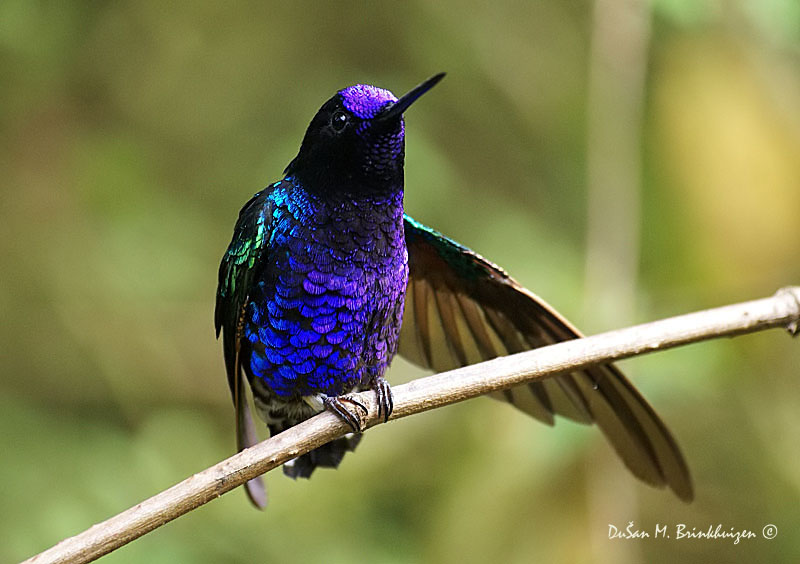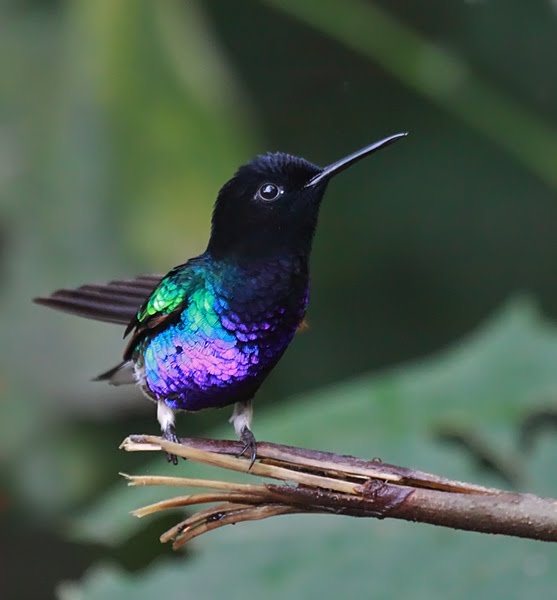
Boissonneaua jardini
SUBFAMILY
Trochilinae
TAXONOMY
Trochilus jardini Bourcier, 1851, Nanegal, Ecuador. Monotypic.
OTHER COMMON NAMES
English: Jardine’s hummingbird; French: Colibri de Jardine;
German: Hyazinthkolibri; Spanish: Colibrн Sietecolores.
PHYSICAL CHARACTERISTICS
4.3–4.7 in (11–12 cm); female and male 0.28–0.3 oz (8.0–8.5 g).
Bill straight, black. Male shining bluish green above with head
and throat velvety black; crown, breast, and belly glittering
purplish blue; underwing-coverts cinnamon and conspicuous in
flight; tail slightly forked, central feathers black, the rest white
with black tips and edges; small leg puffs also white. Female
similar but duller in coloration, with feathers of breast and
belly fringed buff; wings are shorter and tail less deeply forked
than in male. Immatures like females.
DISTRIBUTION
Pacific slope of western Andes in southwest Colombia and
northwest Ecuador.
HABITAT
Prefers wet mossy forests and forest boders in tropical and
subtropical zones, but can also be found at shrubby clearings in
Pacific lowlands and on lower slopes. Records range from
1,150–7,200 ft (350–2,200 m), commonest above 4,000 ft
(1,200 m).
BEHAVIOR
Defends nectar-rich food sources. Sedentary, but seasonal altitudinal
dispersal known in Colombia.
FEEDING ECOLOGY AND DIET
Usually seen feeding at flowers from lower strata to tree tops.
Insects are caught in the air by hawking.
REPRODUCTIVE BIOLOGY
Breeds from January to March. Nest cup-shaped, made of
moss and lichen, placed on a horizontal branch or thin fork.
Two eggs; incubation by female.
CONSERVATION STATUS
Restricted-range species. Uncommon and very local.
SIGNIFICANCE TO HUMANS
None known.
Photo Gallery of - Velvet-purple coronet




 Animalia Life
Animalia Life